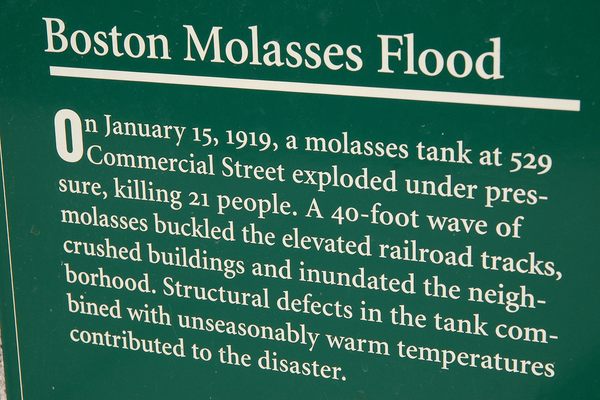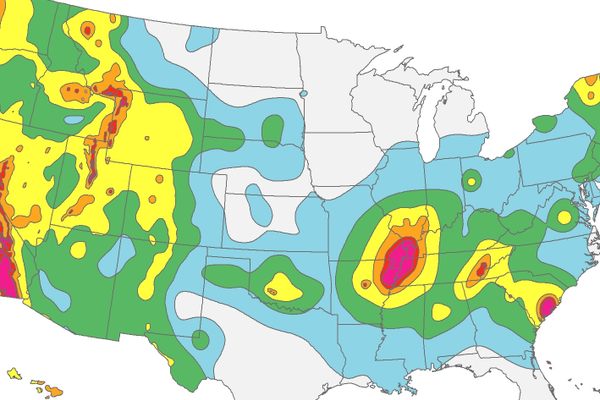95 Years Later: Remembering the Sticky Horror of the Boston Molasses Flood
There is no shortage of forgotten disasters, but few rival the 1919 Great Boston Molasses Disaster in the scope of its strangeness and the small memory of it in the place it totally destroyed.
Today is the 95th anniversary of the January 15, 1919 catastrophe, when a massive steel tank holding some 26 million pounds of molasses broken open, crashing a wave of sticky substance stretching up to 25 feet tall and 160 feet wide. It’s a story that starts as an amusing anecdote — a sugary sea spreading through the streets — but quickly turns into a nightmare of almost unimaginable proportions. Moving at 35 miles per hour, the wave engulfed absolutely everything in its path, including people who were strolling through the afternoon streets on an unusually warm day. The legs of the elevated tracks were broken, houses and buildings were obliterated into shards, horses, as reported by the Boston Post, “died like so many flies on sticky fly paper.”
In the aftermath, 21 people were dead, 150 injured, and rescue was exceeding slow, as of course molasses movement is known to be. The molasses seeped into the infrastructure, and even now on hot days people in the North End area claim to smell a whiff of molasses in the air. The disaster was at first blamed on anarchists — as disasters in early 20th century America tended to be — but was later revealed to be shoddy construction.
In just a few years will be the hundred-year anniversary of the disaster, and it will be interesting to see if there are any major commemorations of the event. For now, all there is to remember the dead is a a small green plaque at the intersection of Foster and Commercial street.
More details on the Great Boston Molasses Flood can be found here in our Morbid Monday feature on the “sweet death,” as well as in our guide to food disasters. More images of the aftermath are below, courtesy the Boston Public Library.
via Wikimedia
Read more about food disasters in our anthology: Death by Food >








Follow us on Twitter to get the latest on the world's hidden wonders.
Like us on Facebook to get the latest on the world's hidden wonders.
Follow us on Twitter Like us on Facebook